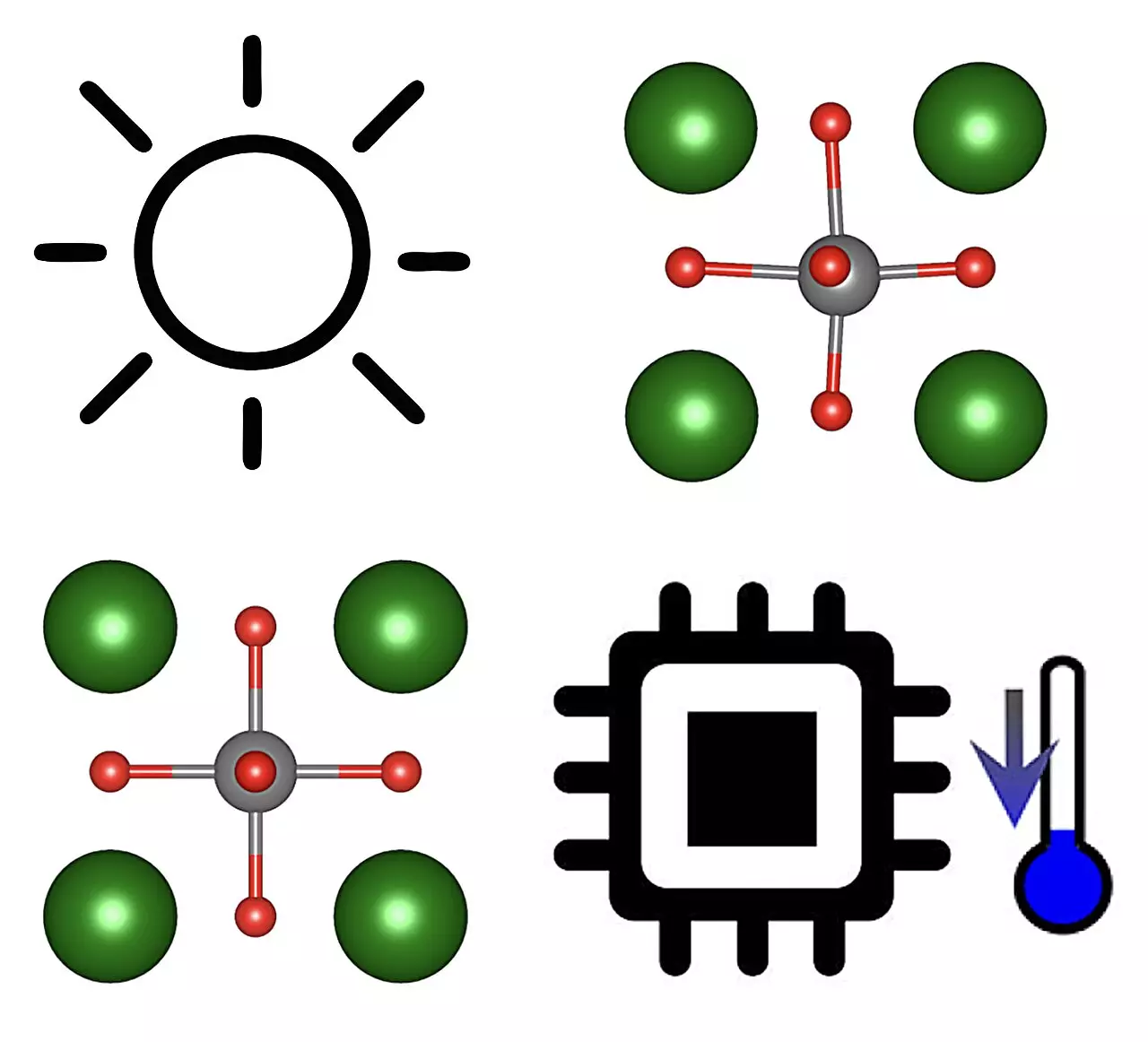The quest for sustainable refrigeration technologies has ushered in innovative methods that aim to reduce energy consumption and environmental impact. Solid-state cooling represents a pioneering shift from traditional refrigeration techniques that typically depend on gases or liquids. Instead, this method capitalizes on the intrinsic properties of solid materials to achieve cooling effects without emitting greenhouse gases—an essential step towards addressing global climate change. Despite the promise of solid-state cooling, challenges persist in harnessing caloric effects effectively for practical applications. This article delves into groundbreaking research that proposes a viable pathway forward through the exploration of photocaloric effects in ferroelectric materials.
Caloric materials traditionally used for solid-state cooling benefit from phase transitions induced by external stimuli like magnetic or electric fields. However, these caloric effects often function efficiently only within limited temperature ranges—usually no more than 10 Kelvin—due to the specific thermodynamic properties of the materials. As such, they are not practical for broader applications in real-world refrigeration systems. Researchers are now venturing beyond established techniques to fundamentally rethink our cooling paradigms.
This exploration has led to intriguing hypotheses that extend the capabilities of solid-state cooling, particularly through the examination of ferroelectric materials. Researchers at the Institut de Ciència de Materials de Barcelona and Universitat Politècnica de Catalunya have put forth a compelling theory that certain ferroelectric perovskites might display exceptionally large photocaloric effects, dramatically expanding our understanding of cooling potential.
The crux of this research lies in the concept of photocaloric effects (PC effects), which are theorized to occur when light induces a transition from a ferroelectric to a paraelectric state in specific materials. This change effectively alters the system’s entropy and can be harnessed for refrigeration purposes. The pivotal factor here is the use of light rather than traditional electric fields, allowing for a more straightforward setup without the need for surface electrodes.
Claudio Cazorla, one of the co-authors of the recently published study in Physical Review Letters, highlighted the serendipitous discovery and theoretical validation of these PC effects during a 2021 workshop. He noted that the ability of ferroelectric materials to transition between phases when illuminated could result in a cycle of refrigeration that surpasses the limitations of existing caloric materials—thus paving the way for novel applications in cooling technology.
Comparative Advantages Over Existing Technologies
One of the most significant advantages of photocaloric effects is their potential to operate efficiently over much broader temperature ranges—up to 100 Kelvin—compared to conventional caloric effects. This expansive capability aligns with the growing demand for refrigeration systems that can function effectively across varying environmental conditions. The research elucidates that not only does the PC effect have substantial cooling potential, but it can also deliver efficiency benefits crucial for industrial applications.
Moreover, the materials explored, such as barium titanate (BaTiO3) and potassium niobate (KNbO3)—both archetypes of ferroelectrics—promise significant advancements in micro-scale applications. The possibility of applying PC effects in central processing unit (CPU) cooling, for instance, could revolutionize how we manage heat dissipation in high-performance computing, thereby enhancing system efficiency and longevity.
The implications of this study are far-reaching. Cazorla and his colleagues are actively exploring other families of materials that may also exhibit light-induced phase transitions suitable for solid-state cooling. Additionally, they are investigating how dimensionality—such as two-dimensional materials or thin films—could further broaden the application of these effects. The integration of photocaloric cooling technology could be significant for advancing quantum technologies, where precise thermal management is critical.
As this area of research evolves, the prospects for experimental verification of these theoretical findings look promising. Collaborations and interdisciplinary studies will likely accelerate the pace at which photocaloric materials can be brought from conceptual designs to tangible applications in cooling technology.
The exploration of photocaloric effects in ferroelectric materials stands at the forefront of developing sustainable refrigeration solutions. By embracing innovative methodologies that transcend traditional paradigms, researchers are poised to unlock efficient and eco-friendly alternatives to conventional cooling systems. This ongoing investigation could not only reshape our understanding of thermodynamic processes but also enhance the viability of technologies that meet contemporary and future environmental challenges. The journey towards a greener future in refrigeration has only just begun, and breakthroughs in this domain hold significant promise.

